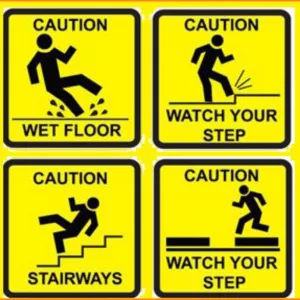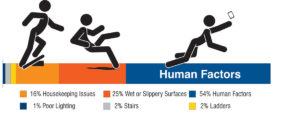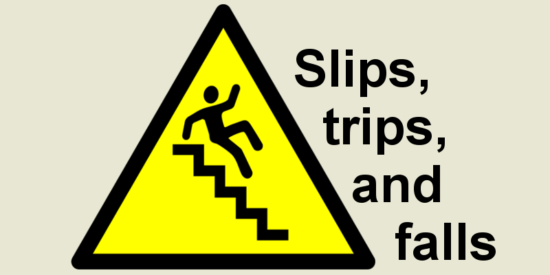
Slips, Trips, & Falls in the Workplace may not be a glamorous legal topic, but it’s an important one. As with most workers’ compensation claims, slip and fall injuries end up being expensive for insurance and businesses alike. The loss of quality employees can lead to a drop in productivity, low morale and a spike in stress levels among your remaining staff. Slips, trips, and falls in the workplace can be devastating. Those who are hurt most often turn to workers compensation. It is something that most people don’t want to deal with but it is a part of running a business and having employees. Every year thousands of claims are filed as a result of workplace slips, trips, and falls. If you have not taken the steps to protect yourself and your business from potential lawsuits, then it would be wise to do so. According to OSHA, slips, trips and falls in the workplace are some of the most common reasons for work-related injuries. OSHA has reported that these accidents result in approximately 300 deaths annually and approximately two million injuries per year.

Slips, trips, and falls are the most common cause of workplace injuries. They result in over 1 million injuries annually and cost businesses over $12 billion dollars in lost time and productivity. What are the risks? Most slip-and-fall accidents happen when workers are walking on a slippery surface such as wet floors or oily rags left on the floor. Other common causes include:
– Poor lighting
– Uneven floors
– Low-lying objects such as pallets and boxes that may trip workers who aren’t paying attention to their surroundings
– Wet or slippery floors caused by rain, snowmelt, or other weather conditions like a sudden change in temperature (e.g., from summer heat outside to winter cold inside)
How can these accidents be prevented? The best way to prevent slips, trips, and falls is through effective safety training programs that teach employees how to identify hazards before they happen and perform safe work practices at all times. This includes regular inspections of work areas for unsafe conditions such as slippery surfaces; use of proper footwear appropriate for the task being performed; keeping floors clear of debris (including trash); proper lighting.
I am a strong believer in being safe. I want to make sure that my employees are not only safe from slips, trips, & falls but also from any other injuries that might occur at work. I am looking for the right person to help me make sure all of our employees know the correct way to lift heavy objects and how to avoid tripping over things on the floor. When you’re in charge of safety at work, you know that slips, trips, and falls can be a big problem. You can’t afford to have your employees injured on the job—and you also can’t afford the legal fallout if someone does get hurt. These statistics, along with the many others I’ve cited, certainly show that the area of OSHA compliance is one that shows no signs of going away. Given how much it costs to defend against negligence lawsuits, along with the sheer number of claims that are filed, it’s proven economically wise for companies to comply with OSHA standards and safety regulations. At the end of the day, it’s just not worth taking the risk and waiting for a slip, trip, & fall injury to happen before you take action to prevent it.

